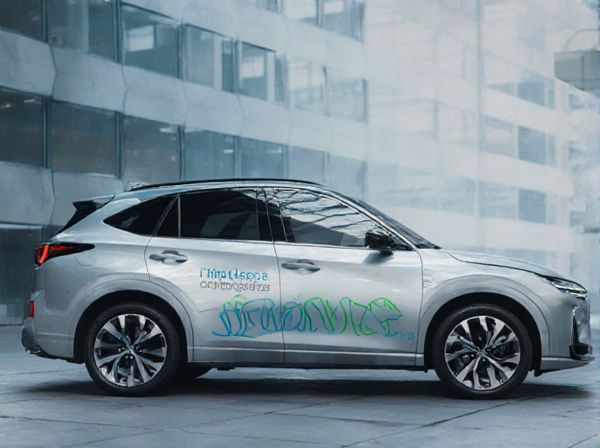
Photo illustration: Micro-Hybrid vs Conventional
Micro-hybrid batteries offer faster recharge times and longer lifespans compared to conventional batteries, making them ideal for vehicles with start-stop technology. Your car's fuel efficiency and emissions can improve significantly with a micro-hybrid system, reducing environmental impact. Conventional batteries remain reliable but lack the advanced energy management features found in micro-hybrids.
Table of Comparison
| Feature | Micro-Hybrid Battery | Conventional Battery |
|---|---|---|
| Function | Supports Start-Stop system, energy recuperation | Provides basic starting and electrical power |
| Voltage | 12V to 48V systems | Typically 12V system |
| Lifespan | Longer due to cycle durability | Shorter, less cycle resistant |
| Battery Type | Enhanced lead-acid or AGM (Absorbent Glass Mat) | Standard lead-acid |
| Cost | Higher initial cost | Lower initial cost |
| Energy Efficiency | Improved fuel economy via energy recovery | No energy recovery |
| Suitable Vehicles | Vehicles with start-stop technology | Conventional vehicles without start-stop |
Introduction to Micro-Hybrid and Conventional Vehicles
Micro-hybrid vehicles integrate start-stop systems that automatically shut off the engine during idling, reducing fuel consumption and emissions compared to conventional vehicles with continuous engine operation. Conventional vehicles rely on traditional internal combustion engines that remain running when the vehicle is stationary, leading to higher fuel usage and increased emissions. The micro-hybrid technology offers an efficient transition towards electrification without the complexity of full hybrid systems.
How Micro-Hybrid Systems Work
Micro-hybrid systems utilize start-stop technology, automatically shutting off the engine during vehicle idling to reduce fuel consumption and emissions. These systems are equipped with regenerative braking that captures kinetic energy to recharge the battery, enhancing overall efficiency. Unlike conventional vehicles, micro-hybrids rely on enhanced battery management and electrical systems to support frequent engine restarts without compromising performance.
Conventional Car Technology Explained
Conventional car technology relies on internal combustion engines powered solely by gasoline or diesel, utilizing a straightforward fuel ignition process to generate mechanical energy. These vehicles lack the start-stop system and energy recovery features found in micro-hybrids, leading to relatively higher fuel consumption and emissions. Mechanical simplicity in conventional cars often results in lower initial costs but less efficiency compared to micro-hybrid systems.
Key Differences Between Micro-Hybrid and Conventional Cars
Micro-hybrid cars utilize start-stop technology to reduce fuel consumption and emissions by automatically shutting off the engine during idling, unlike conventional cars that keep the engine running continuously. Micro-hybrids feature regenerative braking systems to recharge the battery, enhancing overall energy efficiency compared to conventional vehicles with standard alternators. The electrical system in micro-hybrids supports higher energy demand, providing better fuel economy without the added complexity and cost of full hybrid powertrains.
Fuel Efficiency Comparison
Micro-hybrid vehicles enhance fuel efficiency by utilizing start-stop technology that shuts off the engine during idling, reducing fuel consumption significantly compared to conventional engines that run continuously. Studies show micro-hybrid systems can improve fuel economy by up to 10-15% in urban driving conditions where frequent stops occur. Conventional vehicles lack this energy-saving feature, resulting in higher fuel consumption and increased emissions during stop-and-go traffic.
Environmental Impact Assessment
Micro-hybrid vehicles significantly reduce CO2 emissions and fuel consumption compared to conventional cars by utilizing start-stop technology and regenerative braking to enhance engine efficiency. Life cycle assessments indicate that micro-hybrids have a lower environmental impact due to decreased fossil fuel dependency and reduced greenhouse gas emissions during operation. However, the production and disposal of battery systems in micro-hybrids require careful management to minimize ecological footprints associated with raw material extraction and recycling processes.
Performance and Driving Experience
Micro-hybrid vehicles enhance performance by integrating start-stop systems that reduce fuel consumption and emissions without compromising engine power, offering a smoother driving experience in urban traffic. Conventional vehicles generally provide consistent power delivery with less complexity but lack the fuel-saving benefits during idle periods, resulting in higher fuel consumption. The micro-hybrid system's ability to optimize energy use improves responsiveness and reduces noise, making daily driving more efficient and comfortable compared to traditional combustion engines.
Maintenance and Long-term Costs
Micro-hybrid vehicles feature start-stop systems that reduce engine wear and fuel consumption, leading to lower maintenance costs compared to conventional vehicles with continuous engine operation. The regenerative braking in micro-hybrids decreases brake pad replacement frequency, further reducing long-term expenses. Conventional vehicles often incur higher maintenance due to constant engine idling and less efficient fuel use, making micro-hybrids more cost-effective over extended ownership.
Market Availability and Consumer Trends
Micro-hybrid vehicles, equipped with start-stop systems and regenerative braking, are increasingly available in global markets as manufacturers respond to stricter emission regulations and rising fuel efficiency demands. Consumer trends indicate growing preference for micro-hybrid models due to their cost-effective fuel savings and reduced environmental impact compared to conventional internal combustion engine vehicles. Market data shows a steady increase in micro-hybrid sales, particularly in Europe and Asia, where urban congestion and government incentives drive adoption.
Choosing the Right Vehicle: Micro-Hybrid or Conventional?
Micro-hybrid vehicles use start-stop technology and regenerative braking to improve fuel efficiency and reduce emissions compared to conventional vehicles with traditional combustion engines. Choosing the right vehicle depends on factors such as daily driving habits, environmental goals, and fuel economy preferences, with micro-hybrids offering cost-effective benefits for urban and stop-and-go traffic. Conventional vehicles may provide advantages in straightforward performance and lower initial costs for long-distance highway driving without the complexity of hybrid systems.
 caratoz.com
caratoz.com